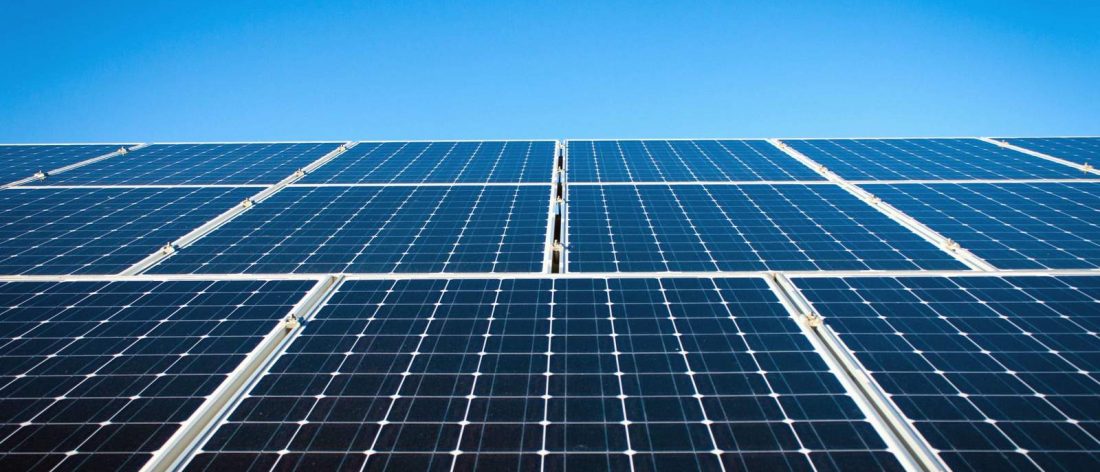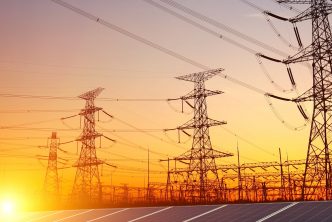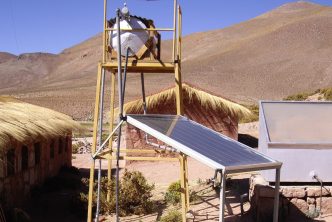Introduction
Access to reliable and affordable electricity services brings about socio-economic
development and improves the quality of life. The Economic Recovery and Growth
Plan (ERGP) of the Federal Government of Nigeria (FGN) recognises the importance
of electricity access to the achievement of any meaningful development especially in achieving the Sustainable Development Goals (SDG). In July 2016, FGN approved a Rural
Electrification Strategy and Implementation Plan (RESIP) with the aim of expanding access to electricity as quickly as possible and in a cost-effective manner, using both grid and off-grid approaches.
The goal of the RESIP is to increase the national electricity access to 75 percent by 2020 and 90 percent by 2030 with at least 10 percent of renewable energy in the energy mix by 2025. In view of the recurrent issues and liquidity challenges affecting the Nigerian Electricity Supply Industry (NESI), offgrid power systems are increasingly being deployed to meet the urgent electricity needs of small and medium scale enterprises (SMEs), households and public buildings.
Off-grid Infrastructure
Off-grid power systems are designed to provide electricity to end-users, independent of the central power grid/network. Off-grid power systems provide opportunities to rapidly and cost-effectively deliver electricity to households and businesses in remote, rural
communities. This solution is also effective with standalone operations such as mining, agriculture and telecommunications. FGN has expressed support for the development of all kinds of renewable energy technologies, especially small hydropower (SHP), solar photovoltaic (PV), biomass, wind power and other hybrid systems.
Solar Photovoltaic
Solar PV installations convert sunlight into electricity. PV electricity generation uses the energy in the light from the sun to cause an electrical current to flow between an array of solar PV panels. Combined with battery storage, energy generated can be stored during the day for use at night. The application of off-grid solar PV could be in the form of a mini-grid or stand-alone system.
Mini-grid infrastructure are electricity supply systems with their own power generation and distribution systems; that supply electricity to more than one customer through a low-voltage distribution line. Their capacities could range from 50kW up to 1 MW beyond which, the developer would need to obtain a distribution and generation license from the regulator. These systems are advantageous in densely populated, large villages with medium load requirement typically from small productive activities. The components of a solar mini-grid include Solar panels, combiner boxes/breaker panel, inverter, battery bank, smart meters, distribution pole/wires, fuses, switches and lightning arresters. A 50kW mini-grid can serve the electricity needs of up to 100 households in a typical rural area with low power requirement.
Stand-alone solar systems are roof-top mounted and present opportunities to provide rapid electricity access to a significant number of households. These solar solutions, ranging from 5W up to 5kW, are cost-comparative with other traditional sources of electricity such as kerosene or battery-powered torches and generators when considering the full cost of maintenance and ownership. While the technical viability of these solar solutions is no longer in doubt, acquisition cost remains a challenge. One of the strategies for reducing this cost is an emphasis on local manufacture of the components. Currently, there is no company in the country that has the capability to manufacture the quantity and quality required to meet the country’s electrification target.
Wind Turbines
Wind turbines produce electricity by capturing the power of the wind to drive a generator which, in turn, produces electricity. There are many sizes of turbines ranging from microturbines for battery charging, small wind turbines less than 50kW and larger turbines over 1MW. The two main types of turbines are Horizontal Axis Wind Turbines (HAWT) and Vertical Axis Wind Turbines (VAWT). HAWT are typically designed with three blades which rotate in a vertical plane around a horizontal hub connected to a gearbox and a generator. VAWT are often mounted on top of buildings and they typically range from 1 kW to 6kW. The economic feasibility of wind turbines depends primarily on wind speed and the quantity of electricity generated. The more electricity generated, the faster the payback period for the investments. Wind power has regulatory issues including visual impact, noise conditions, electromagnetic interference, and radio frequency considerations.
Small Hydropower
SHP systems use flowing water to drive a turbine that turns a generator to produce electricity. The two main types of SHP are pico hydropower (less than 100kW) and micro hydropower (less than 500kW). SHP turbines utilize small rivers or spring-fed streams for power generation in situations where the head (the height that the water falls at the point of exploitation) is sufficient to generate the amount of power required. Small hydropower schemes in Nigeria include Bagel I and II in Plateau (1MW and 2MW), Ouree in Plateau (2MW), Kurra in Plateau (8MW), Lerre I and II in Plateau (4MW each), Bajalori in Sokoto (3MW) and Tiga in Kano(6MW). Some of the challenges facing SHP include flooding of river basins, water quality alterations, sedimentation, migration of fish species and alteration of water navigation systems due to construction and diversion of water. SHPprojects are capital intensive and this factor poses a major barrier to the rapid growth and utilization of hydropower resources.
Biomass
Biomass energy is the use of organic materials such as wood, agricultural waste, human waste, straw and dedicated energy crops for electricity generation. Energy from biomass is released through combustion (burning) and can be used to generate heat and electricity. Prior to procuring a biomass boiler, it is essential to identify and secure a reliable source of input materials (fuel). A wide range of biomass systems are available ranging from a few kilowatts to many MW, with woodchips, pellets and logs being the most popular fuel input. Modern biomass systems are clean, efficient and can compete with other off-grid technologies on a life cycle period. Capital cost is a major constraint to the adoption of biomass systems. The costs of these systems vary with size, biomass fuel type, and cost, and level of system automation. Maintenance costs for biomass equipment are typically higher than those for fossil-fuel boilers and generating sets due to the mechanical handling equipment for fuel and ash. In Nigeria, it is still a daunting task to gather and sort the fuel required for these systems. These non-food inputs must also be at a specified moisture content to meet the stipulated environmental requirements.
Project Finance
Obtaining finance for off-grid power projects is still a significant challenge. Financial institutions and investors provide funds only where the project is commercially viable. Currently, Nigerian banks have a low appetite for such off-grid projects. Funding is mostly available in foreign currencies and has its own associated risks in terms of foreign exchange volatility and increasing cost of hedging. In order to address these issues, concessional financing facilities should be made available. These might include debt at subsidised interest rates, or subsidised risk-sharing instruments such as first-loss or credit-risk guarantees, provided by development banks to commercial lenders.
Conclusion
Increasing electricity access using the traditional way of expanding the national grid is still very important, however, it has been recognised to be complicated, sluggish and expensive. There is an urgent need to electrify Nigeria faster due to the prerequisite for socio-economic development as well as achievement of SDGs. Cost reductions, technology advancements, innovative business models and stable regulatory frameworks make off-grid renewables a credible option to consider for electrifying Nigeria. This is not without its challenges, but there are a number of solutions to be considered by the industry.
Author: Abdulmumini Yakubu is a Power Sector Specialist focused on renewable energy
Research.
Editor: Chinazo Ifeanyi-Nwaoha is a power sector analyst focused on the interplay of policy-practice and regulation.







